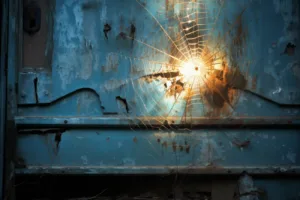A Bauhaus lépcső, or Bauhaus staircase, is an iconic architectural element that exemplifies the principles of the Bauhaus movement. Bauhaus, a German art school founded by Walter Gropius in 1919, aimed to unify art, craft, and technology in pursuit of functional, innovative, and aesthetically pleasing design. The Bauhaus lépcső is a testament to this philosophy, representing a harmonious blend of form and function in the world of staircases.
The bauhaus movement
The Bauhaus movement, which flourished in Germany between the World Wars, revolutionized design and architecture. It rejected ornate and superfluous decoration in favor of minimalism, simplicity, and functionality. Bauhaus designers sought to create objects that were not only beautiful but also practical, accessible, and affordable. These principles were embodied in various aspects of design, including furniture, typography, and, of course, architecture.
The bauhaus lépcső: design and characteristics
The Bauhaus lépcső, or staircase, is a quintessential example of Bauhaus architecture. It embodies several key characteristics of the movement:
- Minimalism: Bauhaus lépcső design is characterized by clean lines, geometric shapes, and a lack of unnecessary ornamentation.
- Functionality: These staircases are designed to serve their primary purpose efficiently while remaining aesthetically pleasing.
- Materials: Bauhaus lépcső often features materials such as steel, glass, and concrete, reflecting an embrace of industrial materials and technology.
- Transparency: The use of glass in Bauhaus staircases allows for transparency, creating an open and spacious feel in the architecture.
Bauhaus lépcső in contemporary design
While the original Bauhaus school closed in 1933 due to political pressure, its design principles continue to influence contemporary architecture and design. The Bauhaus lépcső remains a source of inspiration for architects and interior designers who appreciate its timeless elegance and functionality.
Today, you can find Bauhaus-inspired staircases in modern homes and commercial spaces around the world. These staircases retain the essence of the original design while incorporating modern materials and construction techniques.
The Bauhaus Lépcső: A Timeless Icon
The Bauhaus lépcső stands as a testament to the enduring influence of the Bauhaus movement. Its combination of form and function continues to captivate designers and enthusiasts alike. Whether you’re renovating a historic Bauhaus building or incorporating elements of Bauhaus design into a contemporary space, the Bauhaus lépcső remains a symbol of modernist excellence.
What is the Bauhaus lépcső?
The Bauhaus lépcső, or Bauhaus staircase, is an architectural element that exemplifies the principles of the Bauhaus movement. It is characterized by minimalism, functionality, and the use of materials like steel and glass.
Who designed the Bauhaus lépcső?
The design of the Bauhaus lépcső is attributed to various Bauhaus architects and designers who embraced the principles of the movement. Walter Gropius, founder of the Bauhaus school, played a significant role in shaping its design philosophy.
Where can I see examples of Bauhaus lépcső?
You can find examples of Bauhaus lépcső in historic Bauhaus buildings, modern homes, and commercial spaces that incorporate Bauhaus-inspired design. Museums and architectural exhibitions may also feature displays of Bauhaus staircases.
Is the Bauhaus lépcső still relevant today?
Yes, the Bauhaus lépcső and the broader Bauhaus design principles remain relevant in contemporary architecture and interior design. Many designers draw inspiration from Bauhaus aesthetics, creating modern interpretations of this iconic staircase.
Vezi și:






